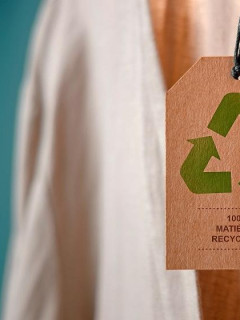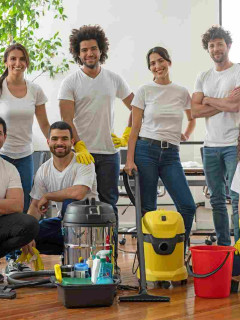Popular with packaging professionals, bubble wrap has also entertained generations of children and adults who have enjoyed popping its tiny air bubbles. This transparent plastic material made up of hundreds of air bubbles offers unrivalled protection for the transportation of fragile objects.
Bubble wrap is particularly suitable for transporting works of art, electronic equipment, crockery, etc.
How to use it, which bubble wrap to choose and 5 things to know about this protective packaging.

The origins of bubble wrap
- Like many great inventions, bubble wrap was invented in 1957 by accident by two engineers, Alfred Fiedling and Marc Chavannes.
- The original idea was for a textured painted film that could be easily washed off.Eventually, thanks to its shock-absorbing properties, bubble wrap wasconverted into a packaging medium and soon became a registered trademark, Bubble Wrap, which is now marketed by Sealed Air Corp, a leading packaging company in New Jersey.
- Bubble wrap has become a pop culture phenomenon thanks to generations of people who have had fun poking holes in bubbles to make that famous “pop” appear, and now has 2 million fans on its Facebook page!
- Bubble wrap has been repurposed into art, relaxation items, clothing and even an iPhone app to play bubble popping.

The different characteristics of bubble wrap
Bubble film diameters
There are several diameters of air bubbles, which vary the degree of protection of the film:
- Diameters between 10 mm and 12 mm: this is the usual diameter of air bubbles, which protects light objects as well as fragile surfaces such as mirrors or lacquered marquetry.
- 18 mm diameter: This bubble diameter is often used for shipping fragile, heavy or sharp-edged objects.
- 32 mm diameter: this diameter is used to protect very fragile or heavy objects and is also widely used as a cushioning system in parcels thanks to the large shock-resistant bubbles that will not burst in the event of a collision.
The different types of bubble film
Bubble wrap is made from two classic polyethylene plastic films
To create the air bubbles, one of the films is placed on a hot cylinder with hemispherical cavities capable of sucking in air, and then the two films are welded together to create a film filled with air bubbles
There are several types of bubble film:
- Anti-static, pH-neutral bubble films: often used in the transport of works of art, they ensure that the colours or chemical composition of paintings or photographs, for example, are not altered thanks to their impermeable bubbles.
- Anti-corrosion bubble film: used for the transport of metal objects.
- Technical bubble films: specific for thermal insulation, for example.
When should bubble wrap be used?
The advantages of bubble wrap
There are many advantages to bubble wrap when transporting goods/objects:
- It protects against dust;
- it protects against light;
- it absorbs shocks thanks to its protective “mattress” effect;
- it is suitable for sharp corners;
- it does not tear easily;
- and it is light!
How to use bubble wrap?
Bubble wrap is particularly popular for transporting artwork, furniture and fragile objects, but it is also often used for its ease of cutting and the minimal mess it creates
Rather than ‘stuffing’ a package with cushioning and multiple layers of protection, a round of bubble wrap is quicker to do, lighter in the package and offers a better user experience.
Bubble wrap or foam wrap?
Foam film is a polyethylene-based protective film that protects fragile surfaces such as:
- Glass windows;
- Painted or lacquered surfaces
- Mirrors;
- Vases;
- Lamps;
- Spare parts, electronics, etc.
There are different thicknesses: but the thicker the foam, the better the protection against scratches and impacts.
Although they are similar, they differ in their use and manufacture:
- Manufacture: they are both made from polyethylene, but foam requires a closed cell low density polyethylene whereas bubble wrap is made from any polyethylene.
- The use according to the packages: the foam film is effective to protect furniture such as a sofa and a wardrobe, which can also be done by the bubble film, but the bubble film offers a better protection in the package thanks to its double function protection + cushioning.
As for what they have in common:
- They both offer effectiveprotection against scratches, shocks, dust and UV rays;
- They are available in several thicknesses depending on the fragility of the goods;
- They can be used as spacers for packing crockery for example;
- They are often used during removals
Bubble wrap is the most popular packaging for the transport of art objects, furniture or fragile products
Its ease of use and its range of thicknesses and techniques (PH neutral, antistatic, etc.) mean that it can also be adapted to very different packages or to objects of multiple sizes.
The three key points to remember
- Bubble wrap has become a true pop culture phenomenon thanks to its globally recognisable air bubbles, and is now even a registered trademark.
- The advantages of bubble wrap are numerous: protection against dust, impact, light, a strong cushioning system, lightness, etc.
- Bubble wrap is often used to transport fragile objects or works of art.
















